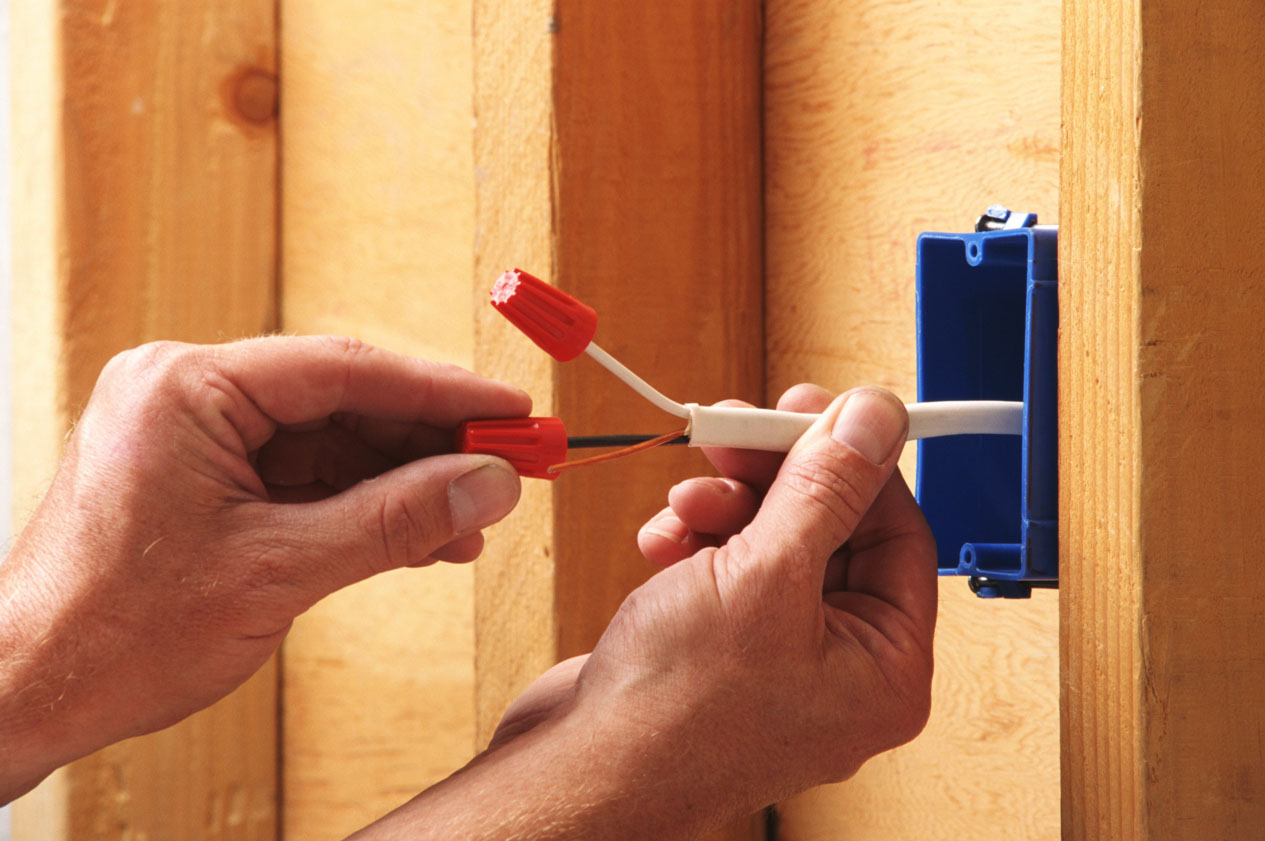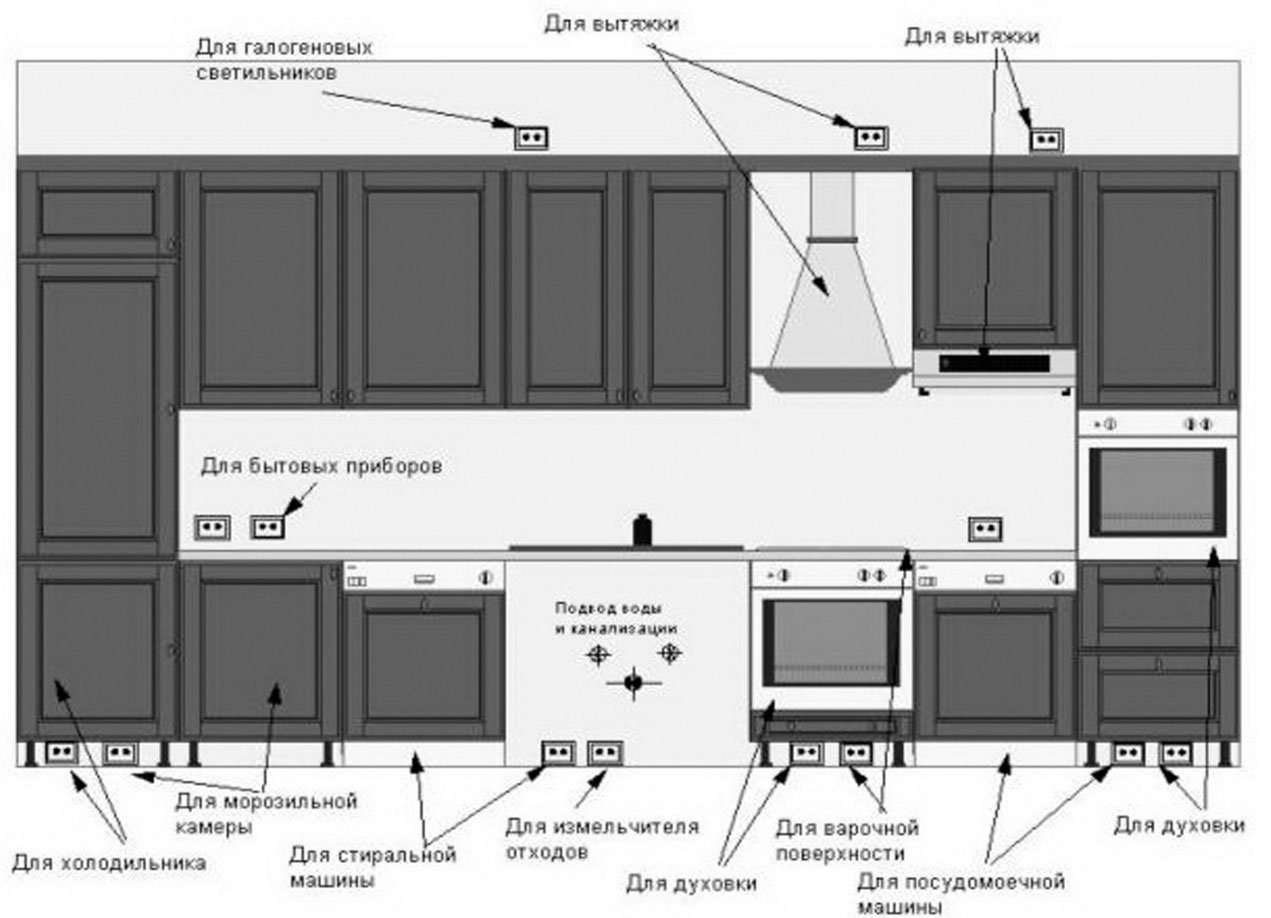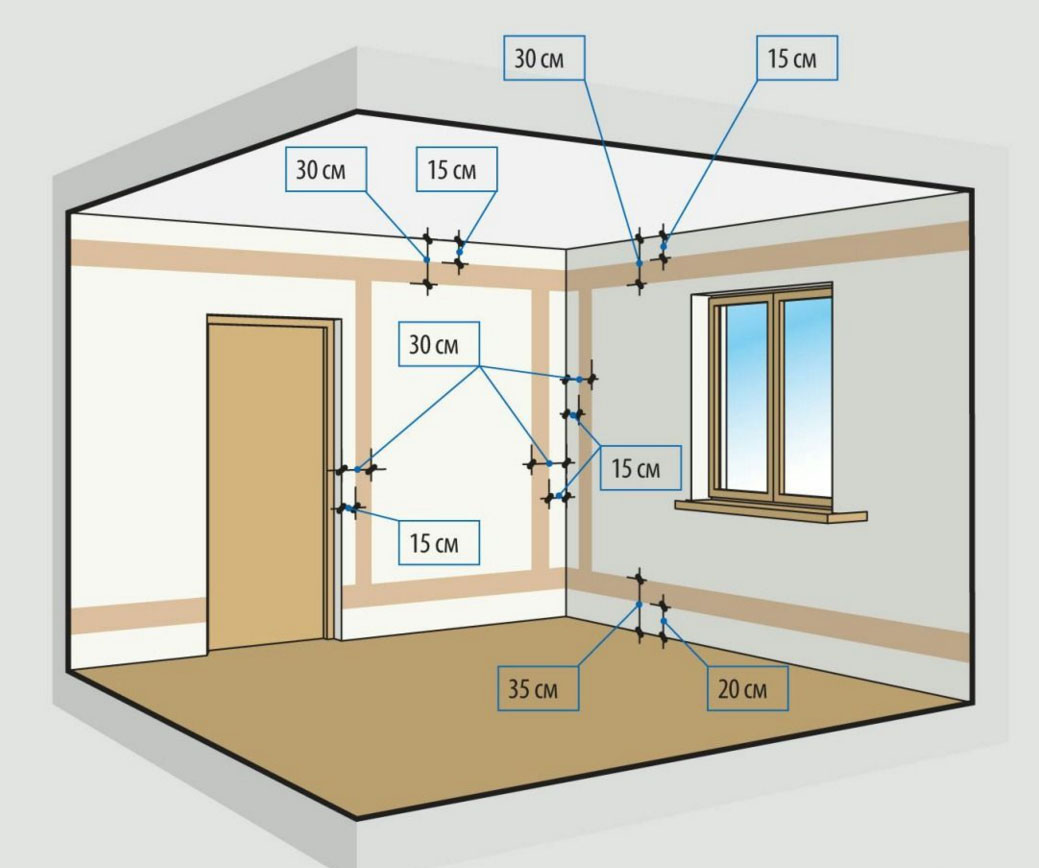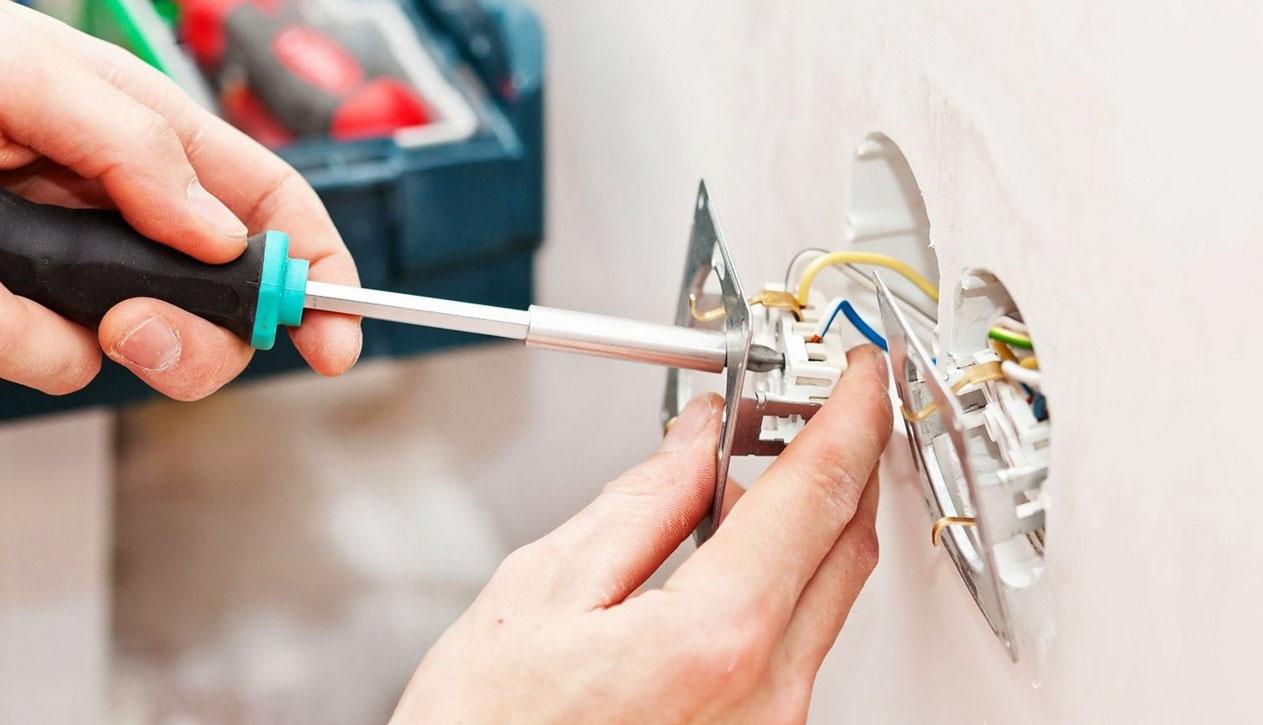Master-class installation of kitchen outlets: a simple conversation on a complex topic
The main requirements, that apply to the modern kitchen, it's easy, safety and beauty. Exquisite design solution collapses, If the picture will spoil unsightly wiring and sockets. Electrics, contrary to established standards of developed, It will become a time bomb - a short circuit can destroy property. If there is any doubt in the knowledge, the cable laying and installation of sockets trust the professionals. Thus it is desirable to understand, what make electricians, because sometimes they make mistakes and. Installation in the kitchen outlets with their own hands, she made?

types of electricity
first, what they do, when it is necessary to put the socket in the kitchen, find out, which network is stretched in the house. There are two types of electricity - with single-phase and three-phase 220V to 380V. It depends on this kind of, quantity, total power devices, It plans to install. If the network is a single-phase, the maximum load does not exceed 11kw - in this case it is sometimes necessary to abandon the powerful electrical or excess amount of art. When the three-phase electricity supply company - Permissible load 33kVt, which allows not to think about the choice of home appliances.
External networks are different number of conductors in the cable - for single phase 2 or 3 wiring, Three-phase - 4 or 5.
Drawing up a plan of sockets: outdoor for electric cookers and other options
If you know, which network is stretched in the house, then comes the second stage - is made up of chart, over which the installation of sockets and switches. At this stage, thought out in detail, where and what kind of equipment will be installed in the kitchen, as well as paving the wiring:
- Draw a kitchen scale drawing with a schematic showing the location of furniture and cabinet sizes
- Select space for large household appliances - stove, fridge, dishwasher, washing machine
![Location outlets in the kitchen]()
Proper positioning of outlets - is primarily a safety - Identify places for medium and small appliances - microwave, kettle, coffeemakers
- Think about the number of additional outlets - set minimum 3 pieces, which are used to connect a landline phone, charger, periodically used electrical appliances
- drew, as the wires are fed to selected outlets Fitting Position - drawn wiring diagram
On the correct plan of sockets depends on the security and usability of electrical engineering, Therefore, to determine in advance with the size of kitchen furniture and appliances
socket arrangement is made before the kitchen renovation in compliance with the rules and electrical safety requirements.
Secure placement of power points
Installation outlets conducted according to the established norms of safe electrical connection. They are taken into account at the planning stage:
- The height of the outlet from the floor — 15 cm. For furniture with standard socket height is 10 cm - power point gets into the open, It is available free
- Height at the location of installation of sockets on the apron - 15-20 cm from the work surface or 90-100 cm from the floor
- For hoods and upper illumination - mounted on cabinet, without blocking ventilation
- Distance to induction cookers - 15 cm
- Distance from Sink, gas or electric stoves - at least 20 cm
- Distance from the appliance - 1-1,5 m
![Places electricity accommodation]()
Placements according to electrical requirements
When is the installation of built-in appliances, the products are cut by the hole in the rear wall of lockers. For each stationary unit allocated separate socket. When choosing a place to connect, remember, that the electrical equipment shall:
- Not be available or safe for children
- Do not obstruct the large appliances - put aside for safety, as well as ease of use
- Do not damage the communication
Now comes the turn of the selection of electrical equipment.
Types of wiring and load distribution
Carry out the wiring in two ways - open or closed. Kitchen acceptable both options, taking into account the pros and cons.
Clear the way
Wires are hidden inside the walls, but it does not mean, that they hang in the kitchen or unattended crawl on walls. Cable channels or electrical baseboards allows you to remove wires and make them safe. Open wiring is characterized by the following qualities:
- Pros - Easy to install and monitor the state of, installation sockets in the kitchen goes mobile - on error in the plan or the emergence of new devices location of access points to the power supply is easily changed
- Cons - the possibility of accidental damage, reduction in usable space, appearance, does not meet the design space
![Open method of wiring]()
Open method of wiring - not always a safe option
Private method
The wires are laid inside walls. There are the following advantages and disadvantages:
- Pros - visual appeal, no accidental damage, preservation of usable area
- Cons - a laborious and expensive process of laying walls with shtroblenie, the inability to make the sockets in the kitchen mobile - errors in planning lead to a new round of construction works
Selecting the type of wiring is different and is not regulated by regulation or.
Load distribution
Installation of home appliances in the kitchen requires the installation of separate machines and route individual lived. This applies to the oven, cookers, washing machines, Hobs, dishwasher. Wiring, which is designed for large electrical appliances, selected on the basis of power.
In organizing the wiring and installation of sockets Do not use tees or extensions - this would lead to an unacceptable increase in the load on the wires and contacts
Types and characteristics of sockets

Sockets in the interior play an important role. They may be invisible, or acting, selected color, consistent with the overall style - wealth elektroassortimenta can solve any design problem. When you select should be combined with a nice reasonable, therefore consider the basic types of outlets:
- Power - the product is chosen for a specific appliance and usually can withstand a force of current in 16A. If you connect the powerful Energy Consumer in a weak outlet, it oplavitsya
- Earthing-pin - plugs designed for the majority of domestic appliances. there are models, supporting conventional and Euro plug
- one- and multi-section - products with two or three sections are designed for intermittent connection of home appliances
- overhead power outlet - advantage is the ease of installation by a pair of screws, drawback - a significant loss beyond the wall
- Hidden sockets - deeper into the wall and make it a single plane
- Retractable - a kind of built-in. Placed on the table, such hidden invisible outlet inoperative, and accrue if necessary
- Waterproof - installed under the sink, provided with a protective cover
- Protected - are available for children's safety, have curl core
- Advanced Security - a socket with ceramic base or thermoplastic. They are not prone to burning and do not melt
- With switch - designed for power outage, not to unplug electrical appliances
- With timer - programmed power off helps automate control of devices
- Backlit - are beacons in the darkness
![Setting outlet]()
Before installing, make sure the outlet, that is de-energized apartment on electricity
Choosing outlet for kitchen, First, pay attention to the ability to withstand the expected electrical power devices, security, and then to design and additional features.
How to install additional switches and socket with his hands: installation of a concrete wall in the apartment and the wooden house
be sure to unplug the cable before starting work. External sockets are mounted on the wall with two screws. The main thing - to choose the right place, and then evenly screw the body product.
To establish a model, which deepened into the wall, It takes more time and tools, among which:
- Perforator with drill, Drill or Bulgarian
- Chisel for alignment holes contours
- Screwdriver, Cordless, a sharp knife
Considering, wiring that is suitable to the place of installation outlet, Proceed according to the following instructions:
- Mark the spot on the wall in the center of the future outlet
- Take podrozetnik, align the center point marked on the wall, circle the circumference of a pencil
- Prodolbite wall on Escutcheon depth - this is easily done with the help of the crown with teeth pobeditovymi, which is attached to punch. Outlet size is usually the standard - 67-68 mm, crown diameter 70 mm
- Adjust the resulting hole for a specific product,, aligning chisel
- Secure Escutcheon using plaster solution
- Align the wall
- Remove to 1,5 See winding with wires
- Attach the wires to the terminals, hide excess
- Insert elektronachinku in podrozetnik, secure, put the lid on
When mounted concealed or outer socket, the work is related to increased risk for life plus the subsequent safety of an apartment or house. Before the start should develop a detailed plan for the installation of electrical kitchen in accordance with the standards of fire safety and electrical safety. Do not forget to install 3-4 additional power point, to eliminate the use of T-pieces or adapters. In case of doubt in their own abilities, seek help from a professional electrician.




